Carl Zimmer's Blog, page 69
March 21, 2011
Evolvability: My story in today's NY Times
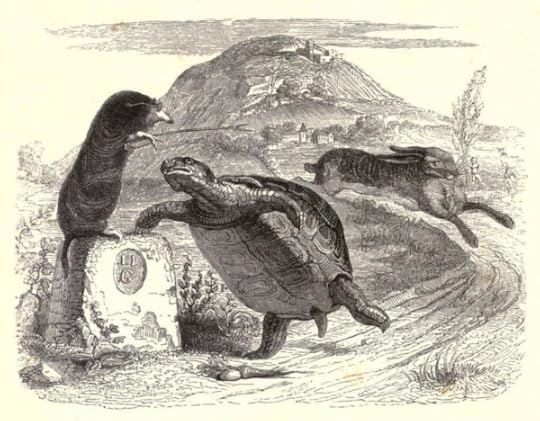 Today I've got a story about some new research into evolvability–the potential to reach new adaptations. Scientists have explored the possibility of evolvability for some time now, but mostly through analyzing mathematical equations. Now a new study offers a fine-grained picture of evolvability in action. Richard Lenski of Michigan State and his colleagues have watch evolvability help one line of bacteria beat out another one. It's a Darwinian story of the tortoise and the hare. Check it out.
Today I've got a story about some new research into evolvability–the potential to reach new adaptations. Scientists have explored the possibility of evolvability for some time now, but mostly through analyzing mathematical equations. Now a new study offers a fine-grained picture of evolvability in action. Richard Lenski of Michigan State and his colleagues have watch evolvability help one line of bacteria beat out another one. It's a Darwinian story of the tortoise and the hare. Check it out.
(For more on evolvability, check out this review by Massimo Pigliucci [pdf])
[Image: Wikipedia]

March 20, 2011
Dive into your inner lake: My keynote lecture on the microbiome (slides and audio)
Earlier this month I was invited to deliver a keynote address at the Joint Summit on Translational Science in San Francisco. The meeting brings together scientists who seek to master the rising tide of biological data, in order to find new medical treatments. I urged them to think like ecologists, and treat the human body like an ecosystem of thousands of species.
I recorded my talk on my trusty iPhone, and I've posted the audio below. (You can download it.) It's also here.
Carl Zimmer Keynote Lecture on the Human Microbiome by Carl Zimmer
And below are the lecture slides (also on Slideshare). (Thanks to everyone who responded to my query about the best way to present my talks. I hope later this week to turn the talk into a written post.)
The Human Jungle: Exploring the Microbiome
View more presentations from cwzimmer

March 18, 2011
Glimpses of the Fourth Domain?
Charles Darwin pictured evolution as a grand tree, with the world's living species as its twigs. Scientists identify 10,000 new species a year, but they've got a long, long way to go before finding all of Earth's biodiversity. Scientists have identified 1.5 million species of animals, for example, but there may be 7 million or more in total. Beyond the animal kingdom, our ignorance balloons. Scoop up some sea water or a cup of soil, and there will likely be thousands of new species of microbes lurking there. Fortunately, a lot of the species that scientists discover each year are fairly close relatives to species we already know about. There may be plenty of beetle species left to be discovered, for example, but they will all end up as tufts sprouting from the same beetle branch.
Making matters more complicated is that the tree is, in some ways, more like a web. Genes sometimes slip from one species to another, especially among microbes. There are lots of ways this can happen. Viruses can ferry these genes from species to species; in other cases, microbes may just slurp up naked DNA. In the process, they blur genealogy.
This can be a hard concept ...
March 15, 2011
Copyright law meets synthetic life meets James Joyce
 Last year I wrote about how Craig Venter and his colleagues had inscribed a passage from James Joyce into the genome of a synthetic microbe. The line, "To live, to err, to fall, to triumph, to recreate life out of life," was certainly apropos, but it was also ironic, since it is now being defaced as Venter's microbes multiply and mutate.
Last year I wrote about how Craig Venter and his colleagues had inscribed a passage from James Joyce into the genome of a synthetic microbe. The line, "To live, to err, to fall, to triumph, to recreate life out of life," was certainly apropos, but it was also ironic, since it is now being defaced as Venter's microbes multiply and mutate.
Turns out there's an even weirder twist on this story. Reporting from SXSW, David Ewalt writes about a talk Venter just gave. Venter recounted how, after the news of the synthetic microbe hit, he got a cease-and-desist letter from the Joyce estate. Apparently, the estate claimed he should have asked permission before copying the language. Venter claimed fair use.
Man, do I wish this would go to court! Imagine the legal arguments. I wonder what would happen if the court found in the Joyce estate's favor. Would Venter have to pay for every time his microbes multiplied? Millions of little acts of copyright infringement?
Crowd-sourcing the swimming eyeball
Last week I wrote in the New York Times about a fascinating new paper in which scientists described a lamp shell embryo that is, in effect, a swimming eyeball. The paper itself, however, comes in two parts. Along with the part on the swimming eyeball, the scientists also described a later stage of the lamp shell embryo in which it developed simple eyes connected to neurons. It's primitive version of our own eyes that reveals some interesting things about evolution–particularly about the different photoreceptors that evolved over half a billion years ago for sensing light. At the time, I was struck by the fact that this one paper had two newsworthy insights. So I was glad to see PZ Myer takes up the other half of the story in excellent detail over at Pharyngula. Check it out.
March 14, 2011
The birth of the animal kingdom: My new piece for the New York Times
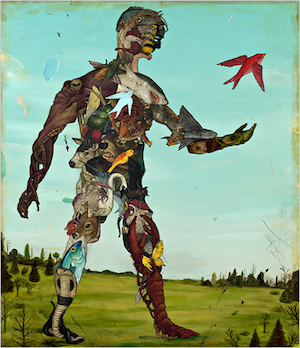 Tomorrow's Science Times section of the New York Times has a special package of articles all about animals–the relationship between humans and the animals we raise, what makes us separate from animals, and so on. I took the opportunity to take a big step back and look at how animals came to be in the first place. The answer–or at least part of it–lies among some weird creatures, such as this tentacled creature that dwells inside snails. Check it out.
Tomorrow's Science Times section of the New York Times has a special package of articles all about animals–the relationship between humans and the animals we raise, what makes us separate from animals, and so on. I took the opportunity to take a big step back and look at how animals came to be in the first place. The answer–or at least part of it–lies among some weird creatures, such as this tentacled creature that dwells inside snails. Check it out.

March 11, 2011
How a pit viper saved millions of lives: Snakes as drug factories
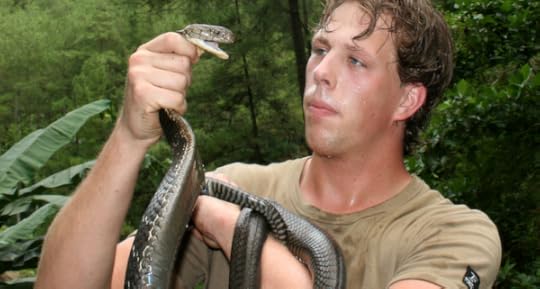 If you've just been bitten by a venomous snake and your flesh is starting to rot and you can't breathe, you may not be in the mood to hear how beautiful snake venom can be. But from a safe distance, it really is a marvel to behold.
If you've just been bitten by a venomous snake and your flesh is starting to rot and you can't breathe, you may not be in the mood to hear how beautiful snake venom can be. But from a safe distance, it really is a marvel to behold.
Snake venom is a blend of molecules, many of which are exquisitely adapted for wreaking havoc. Some are enzymes that slice muscles apart. Some grab onto proteins that normally form clots, so that a snake's victim can't stop bleeding. Many snake venoms attack the nervous system with molecular precision that's so good that neuroscientists have snakes to thank for some of their biggest discoveries.
In the 1950s, two researchers in Taiwan–CY Lee and CC Chang–decided to study the venom of the banded krait. A bite from the snake, native to Taiwan, caused paralysis and shallow breathing–suggesting to the scientists that the snake's venom must interfere in an interesting way with the nervous system's control of muscles.
Nerves trigger muscles to contract by releasing the neurotransmitter acetylcholine. At first Lee and Chang assumed that the snake venom must cut acetylcholine apart, but they found it had ...

March 10, 2011
A question for you: what should I do with my lectures?
I just got back from San Francisco, where I gave a keynote lecture about how our bodies are like ponds, and why doctors need to think like ecologists. It takes a lot of time for me to put these talks together, and so I like to share them afterwards with more people than those who were physically in the room with me. Sometimes the people who invite me videotape the lectures and put them online. (Example: A talk I gave about science and the media.)
Other times, I make an audio recording and merge it with the slides to create a video. (Example: A talk about Neanderthals.) Still other times, I turn my lecture notes into an essay, illustrated with some of my slides. (Example: a piece on why we get old.) Either way, it takes a fair amount of time and so I want to make sure I'm actually making something people want to watch or read. But it occurred to me that I don't know audience psychology well enough to know what the best course of action is.
So, if you don't mind, let me foist this quick little poll on you. I'd really appreciate your answers, ...
February 28, 2011
A swimming eyeball?
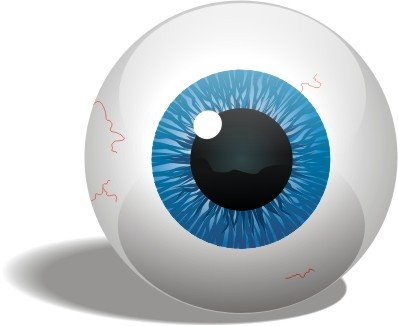 Here's one of the weirder things I've come across in biology. When lamp shells are just tiny 36-hour-old embryos–just a clump of a few hundred cells–they can see. Many cells on their outer surface express a photoreceptor gene, and they show evidence of being able to swim towards light. In other words, these lamp shells are swimming eyeballs.
Here's one of the weirder things I've come across in biology. When lamp shells are just tiny 36-hour-old embryos–just a clump of a few hundred cells–they can see. Many cells on their outer surface express a photoreceptor gene, and they show evidence of being able to swim towards light. In other words, these lamp shells are swimming eyeballs.
Aside from the surrealism, this discovery is also cool because it might be a model for how our own eyes evolved. Perhaps they started out in a similar way. For more details, check out my story in today's New York Times.
The Mere Existence of Whales
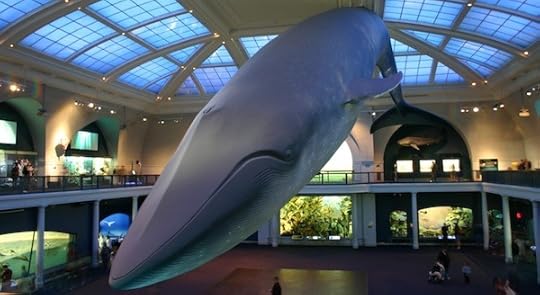 Strictly speaking, there should be no blue whales.
Strictly speaking, there should be no blue whales.
Blue whales can weigh over a thousand times more than a human being. That's a lot of extra cells, and as those cells grow and divide, there's a small chance that each one will mutate. A mutation can be harmless, or it can be the first step towards cancer. As the descendants of a precancerous cell continue to divide, they run a risk of taking a further step towards a full-blown tumor. To some extent, cancer is a lottery, and a 100-foot blue whale has a lot more tickets than we do.
Aleah Caulin of the University of Pennsylvania and Carlo Maley of the University of California, San Francisco, have done some calculations of the risk of cancer blue whales have because of their huge size. We don't know a lot about cancer in blue whales because blue whale oncology wards would be a wee bit awkward for everyone involved. So Caulin and Maley extrapolated up from humans.
About thirty percent of all people will get cancer by the end of their life. Scientists have been able to build good models for the odds of developing ...














